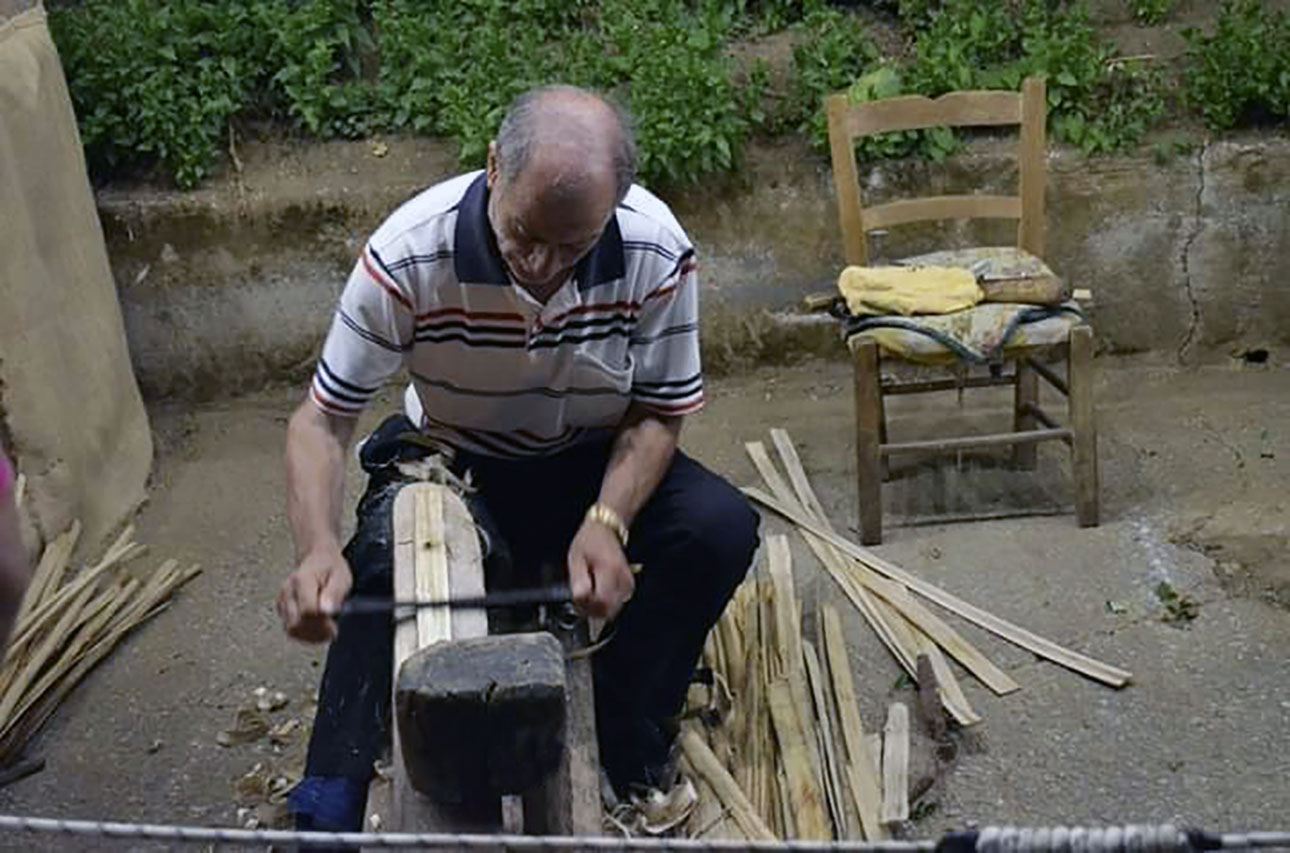In the past, Tramonti was the center of the production of wooden baskets. An ancient art that today struggles to survive. We met Luigi Falcone, the only one who still carries on this old tradition.
April 4th, 2022. By Anna Volpicelli
In the 50s, it was one of Tramonti’s most profitable handicraft activities. The art of the basket maker (cuofanaro in local dialect) had become so popular that in Cesarano was even formed a cooperative that brought together about 40 people from Figlino, Pietre, Capitignano, and Corsano.
Under the presidency of Vincenzo Caso, the goal was to enhance this ancient tradition. Baskets, “sporte” (kind of basket), and “spaselle” (kind of basket) were woven and used by farmers to transport fruit and vegetables from one place to another on the Amalfi Coast.
Skilled artisans realized real works of art in their stores, developing a production so intense that it was also recognized nationally. In 1954 at the International Handicrafts Fair in Florence, Aniello Sazano, a master basket maker from the area, won second prize for having composed a giant basket.
A family tradition
Today, unfortunately, due to the large industrial manufacturing industry, many people are abandoning this profession, even if there is someone who continues to dedicate himself to this passion.
“My father – says Luigi Falcone, 69 years old from Cesarano, the only cuofanaro (wooden basket artisan) in the area – has been weaving baskets all his life. Since I was a child, I used to watch him. When I came back from the military, I started to work alongside him, even if he always encouraged me to look for a real job because, he said, the profit was little”. So he was a bricklayer during the day, and in the evenings or in his spare time, he worked at it. “I even got up at 1 a.m. to finish a basket before working.”

The different typologies
Of different sizes and types there are two baskets: Cuofano and Panaro. The first has a hemispherical or conical shape with two handles transporting heavier materials. Instead, the second one has a cylindrical shape equipped with a single handle that is used for the collection of fruits and vegetables since it is easier to attach it to trees.
“Doing this craft takes a lot of patience. The processing time varies from two to four-five hours, but fundamental is collecting and preparing the material.”
Chestnut wood processing
The chosen wood is chestnut. If the master basket makers could choose their trees in the past by marking them and agreeing with the owners of the woods on the price, now the recovery has become a bit more complicated. “Sometimes whole days go by before I find something good to work with.”
Once the stems are harvested, they select the parts to make the handle with, which need to be softer, and those for the body. The kegs for the handle are baked in the oven for 10 minutes, while those used to create the basket are baked at about 150-180 degrees for 90 minutes. When they are taken out of the oven, they need to rest and then made into wicker and notches (the base of the basket).
“For the base, three notches of the same length are overlaid to form a star. In this structure then, the wicker is woven. To obtain the wicker, the wood is cut into two parts. Then each part is divided horizontally into two other parts. From here, thin strips are made using a knife or my teeth,” he laughs. Although the production is decreasing, Luigi Falcone continues cultivating his art daily in his laboratory. “Now that I am retired, I have to do something which has always been my great passion.”
